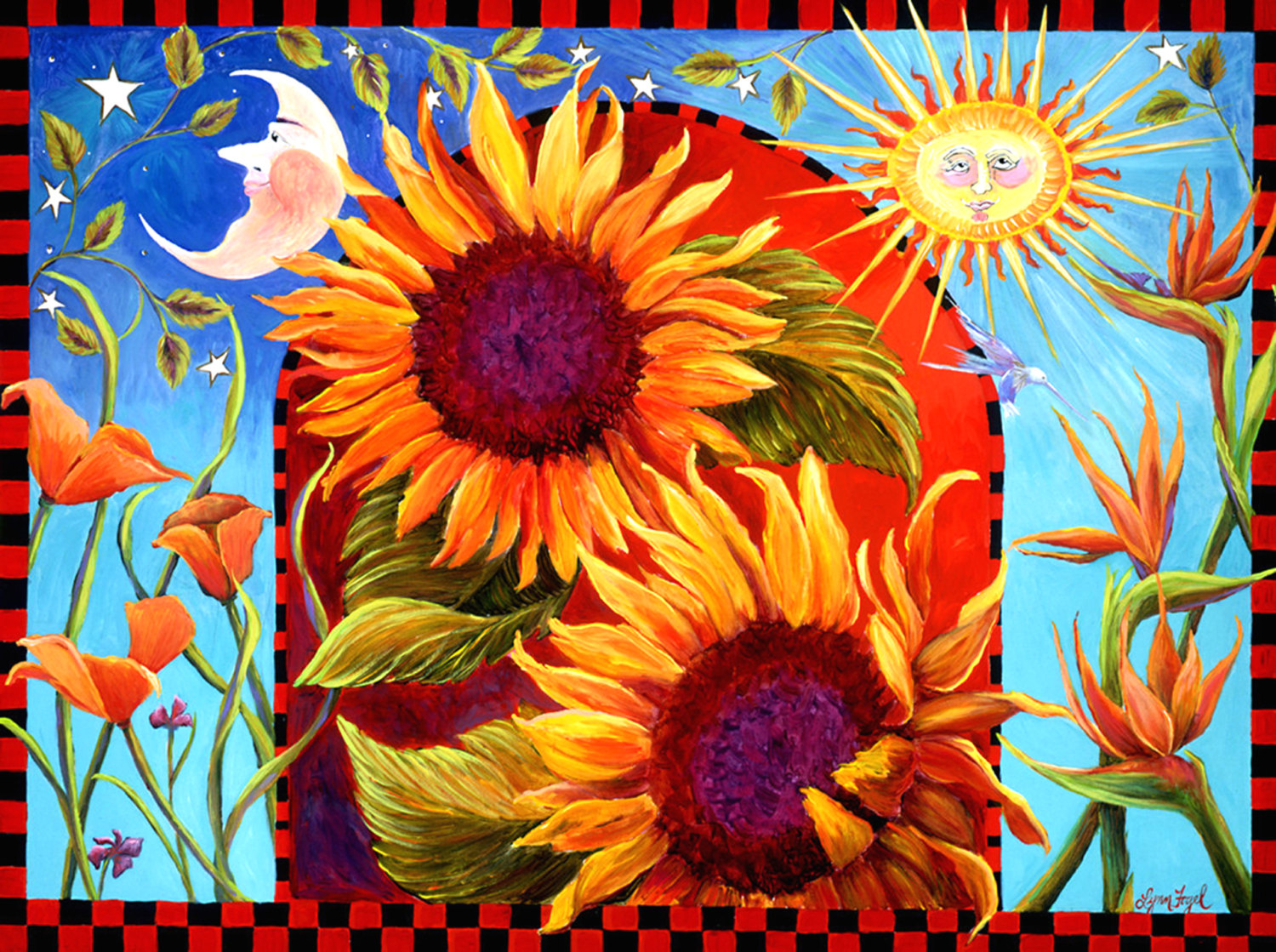Blog
George Allen Russell (June 23, 1923 – July 27, 2009) was an American jazz pianist, composer, arranger and theorist. He is considered one of the first jazz musicians to contribute to general music theory with a theory of harmony based on jazz rather than European music, in his book Lydian Chromatic Concept of Tonal Organization (1953).
Russell was born in Cincinnati, Ohio, on June 23, 1923, to a white father and a black mother. He was adopted by a nurse and a chef on the B & O Railroad, Bessie and Joseph Russell. Young Russell sang in the choir of the African Methodist Episcopal Church and listened to the Kentucky Riverboat music of Fate Marable. He made his stage debut at age seven, singing “Moon Over Miami” with Fats Waller.
more...Milton John Hinton (June 23, 1910 – December 19, 2000) was an American double bassist and photographer.
Regarded as the Dean of American jazz bass players, his nicknames included “Sporty” from his years in Chicago, “Fump” from his time on the road with Cab Calloway, and “The Judge” from the 1950s and beyond. Hinton’s recording career lasted over 60 years, mostly in jazz but also with a variety of other genres as a prolific session musician.
He was also a photographer of note, praised for documenting American jazz during the 20th Century.
Hinton was born in Vicksburg, Mississippi, United States, the only child of Hilda Gertrude Robinson, whom he referred to as “Titter,” and Milton Dixon Hinton. He was three-months-old when his father left the family. He grew up in a home with his mother, his maternal grandmother (a former slave of Joe Davis, the brother of Jefferson Davis), and two of his mother’s sisters.
more...The martinete is one of the main ‘cantes’ (songs) of flamenco and is considered a form of toná. Although its origin is uncertain, most researchers place it in the forges of Jerez, Cádiz and Triana (Seville), places where the Andalusian gypsies used to work, who began to develop these songs.
Considered a modality of the toná, the martinete is interpreted without guitar, ‘a palo seco’, although sometimes it is accompanied by the sounds that are reminiscent of those of a forge, hitting some metal.
In fact, the name of this song refers to the hammer with which the blacksmiths or the twin bellows used in the forges that are called hammers worked.
It is a song with a couplet, of four verses of eight syllables. His lyrics are characterized by having a sad content and a monochrome tone. It begins with an om ‘tran-tran’onomatopoeic, which recalls the sound of the hammer on the anvil, and ends with long ‘quejío’.
The martinete, together with the soleá, seguiriya or tonás, are considered “cantes grandes” of flamenco and styles that support the tree of this artistic genre.
more...Cosmic dust clouds cross a rich field of stars in this telescopic vista near the northern boundary of Corona Australis, the Southern Crown. Part of a sprawling molecular cloud complex this star forming region is a mere 500 light-years away. That’s about one third the distance of the more famous stellar nursery known as the Orion Nebula. The 2 degree wide frame would span 15 light-years at the clouds’ estimated distance. Mixed with bright nebulosities the dust clouds effectively block light from more distant background stars in the Milky Way and obscure from view embedded stars still in the process of formation. Large dark nebula Bernes 157 is on the left. To its right are a group of pretty reflection nebulae cataloged as NGC 6726, 6727, 6729, and IC 4812. Their characteristic blue color is produced as light from hot stars is reflected by the cosmic dust. The more compact NGC 6729 surrounds young variable star R Coronae Australis. Just below it, filamentary arcs and loops are identified as Herbig Haro objects associated with energetic newborn stars. In fact, at the heart of this area lies the Coronet Cluster, one of the nearest and most active star forming regions.
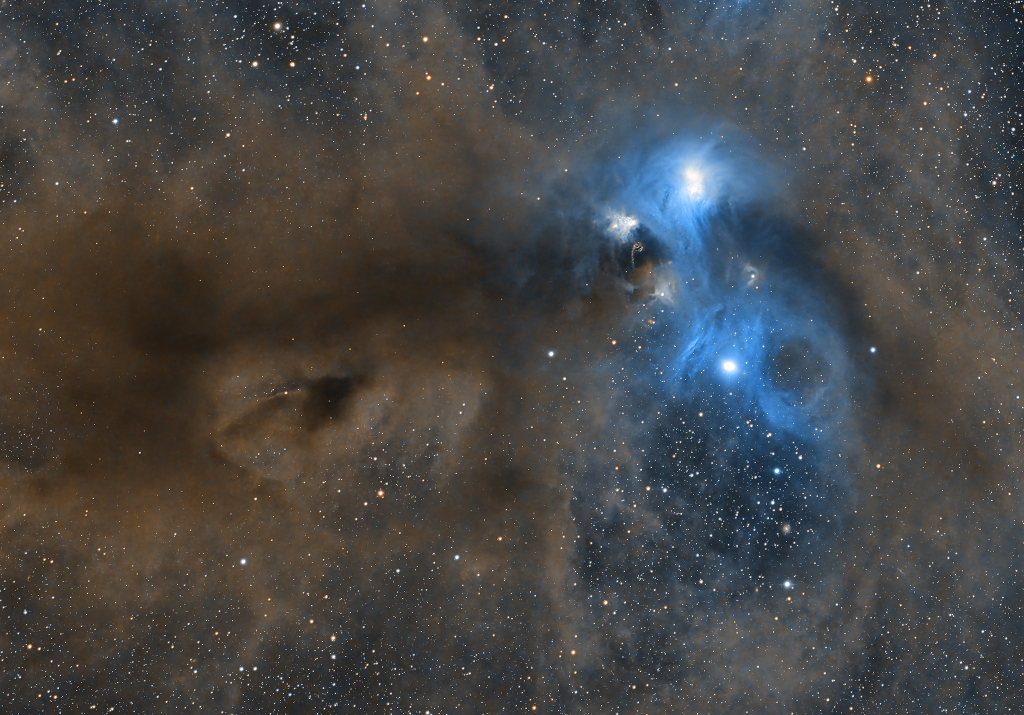
Hermeto Pascoal (born June 22, 1936) is a Brazilian composer and multi-instrumentalist. He was born in Lagoa da Canoa, Alagoas, Brazil. Pascoal is a significant figure in the history of Brazilian music, mainly known for his abilities in orchestration and improvisation, as well as being a record producer and contributor to many Brazilian and international albums.
Pascoal comes from Northeastern Eastern Brazil, in an area that lacked electricity at the time he was born. He learned the accordion from his father and practiced for hours indoors, as, being albino, he was incapable of working in the countryside with the rest of his family.
more...Kristoffer Kristofferson (born June 22, 1936) is an American retired country singer, songwriter, and actor. Among his songwriting credits are “Me and Bobby McGee“, “For the Good Times“, “Sunday Mornin’ Comin’ Down“, and “Help Me Make It Through the Night“, all of which were hits for other artists.
In 1985, Kristofferson joined fellow country artists Waylon Jennings, Willie Nelson and Johnny Cash in the country music supergroup The Highwaymen, which was a key creative force in the outlaw country music movement that eschewed the traditional Nashville country music machine in favor of independent songwriting and producing.
As an actor, Kristofferson is known for his roles in Pat Garrett & Billy the Kid (1973), Blume in Love (1973), Alice Doesn’t Live Here Anymore (1974), A Star Is Born (1976) (which earned him a Golden Globe Award for Best Actor), Convoy (1978), Heaven’s Gate (1980), Lone Star (1996), Stagecoach (1986), and the Blade film trilogy (1998–2004).
In 2004, Kristofferson was inducted into the Country Music Hall of Fame.
Kristoffer Kristofferson was born in Brownsville, Texas, to Mary Ann (née Ashbrook) and Lars Henry Kristofferson, a U.S. Army Air Corps officer (later a U.S. Air Force major general). His paternal grandparents emigrated from Sweden, while his mother had English, Scots-Irish, German, Swiss-German, and Dutch ancestry.
more...Raymond Mantilla (June 22, 1934 – March 21, 2020) was an American percussionist.
- Mantilla (Inner City, 1978)
- Hands of Fire (Red, 1984)
- Synergy (Red, 1986)
- Dark Powers (Red, 1988)
- The Next Step (Red, 2000)
- Man-Ti-Ya (Savant, 2004)
- Good Vibrations (Savant, 2006)
- The Connection (Savant, 2013)
- High Voltage (Savant, 2017)
- Rebirth (Savant, 2021).
KARIBUNI performing Wednesday June 21st 130-230pm at Cerenity Humboldt. This version of the East African ensemble with Shalita, MP Mpambara Gubare, Edna Idelle and mick laBriola. A Celebration concluding the RHYTHM ROOTS WORKSHOP ending on 6-14-23
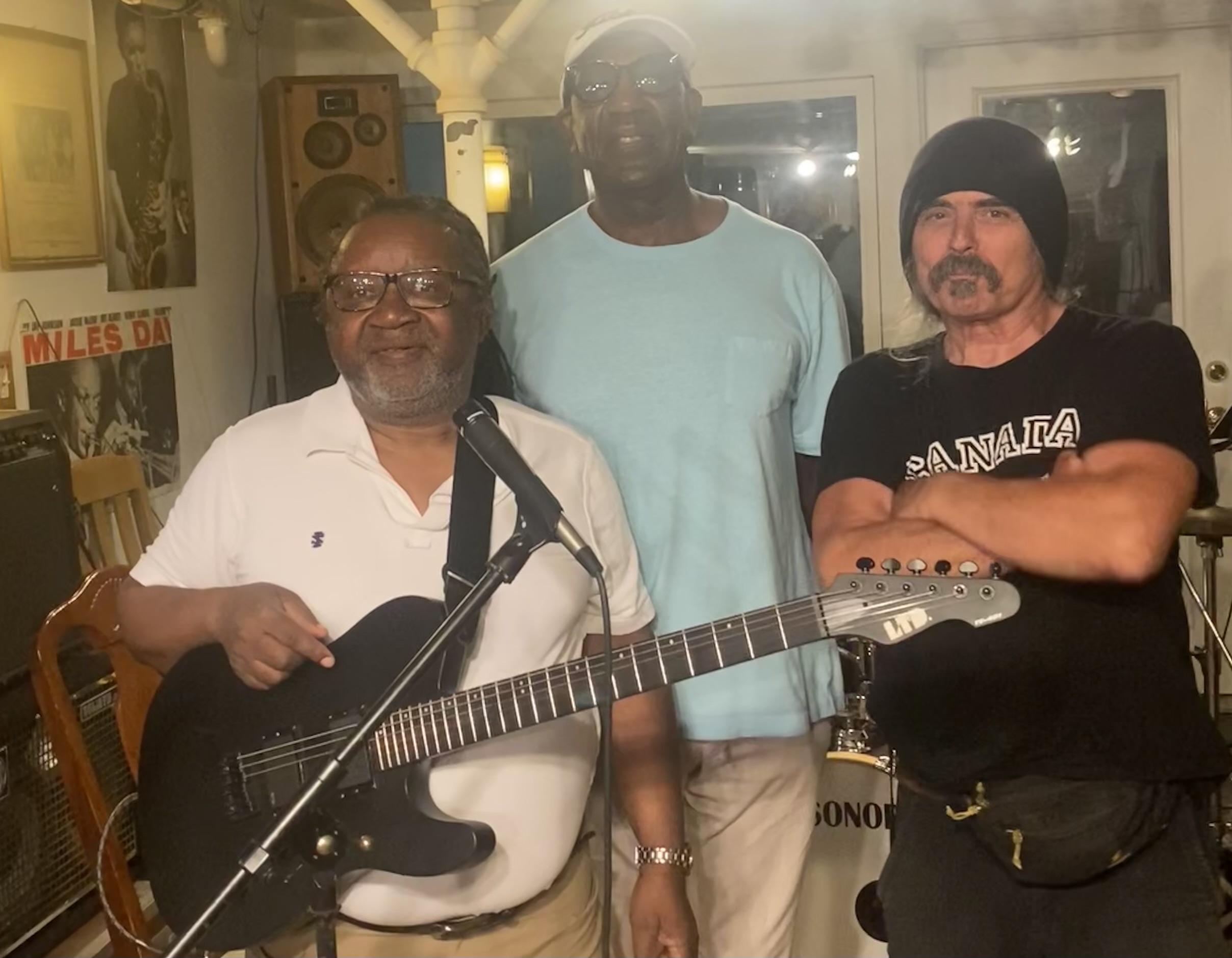
The Elephant’s Trunk Nebula is a concentration of interstellar gas and dust within the ionized gas region IC 1396, located in the constellation Cepheus about 2400 light-years from Earth. The part of the nebula shown in my photo is the dark dense globule vdB 142, commonly referred to as the Elephant’s Trunk nebula due to its appearance at visible light wavelengths, where there is a dark spot with a bright, sinuous edge . The bright edge is the surface of the dense cloud that is illuminated and ionized by a very bright and massive star (HD 206267) located just east of vdB 142.
The Elephant’s Trunk Nebula is thought to be a site of star formation, containing several very young stars (less than 100,000 years old) that were discovered in infrared images from 2003. Two older stars are present in a small circular cavity in the head of the globule. The winds from these young stars may have emptied the cavity.
The combined action of the light from the massive star ionizing and compressing the edge of the cloud and the wind from the young stars moving the gas outward from the center lead to a very high compression in the Elephant’s Trunk Nebula. This pressure triggered the current generation of protostars.
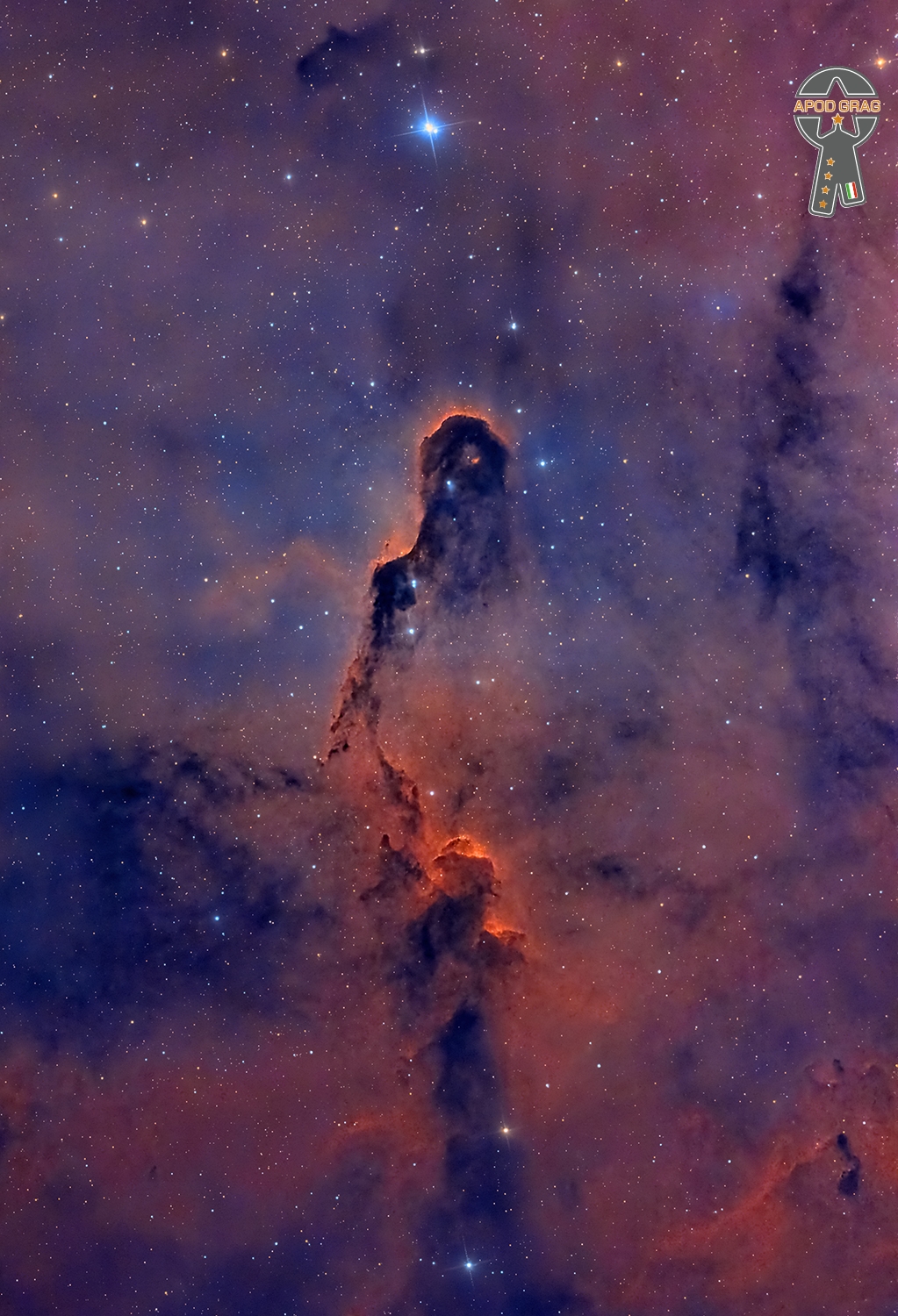
Nils Hilmer Lofgren (born June 21, 1951) is an American rock musician, recording artist, songwriter, and multi-instrumentalist. Along with his work as a solo artist, he has been a member of Bruce Springsteen‘s E Street Band since 1984, a member of Crazy Horse, and founder/frontman of the band Grin. Lofgren was inducted into the Rock and Roll Hall of Fame as a member of the E Street Band in 2014.
Lofgren was born in Chicago, Illinois, United States, to an Italian mother and a Swedish father. When he was a young child, the family moved to the Washington, D.C., suburb of Bethesda, Maryland. Lofgren’s first instrument was classical accordion, beginning at age five, which he studied seriously for ten years. After studying classical music and jazz, throughout his youth, Lofgren switched his emphasis to rock music, and focused on the piano and the guitar.
more...Boris Claudio “Lalo” Schifrin (born June 21, 1932) is an Argentine pianist, composer, arranger, and conductor. He is best known for his large body of film and TV scores since the 1950s, incorporating jazz and Latin American musical elements alongside traditional orchestrations. He is a five-time Grammy Awardwinner; he has been nominated for six Academy Awards and four Emmy Awards.
Schifrin’s best known compositions include the “Theme from Mission: Impossible“, as well as the scores to Cool Hand Luke (1967), Bullitt (1968), THX 1138 (1971), Enter the Dragon (1973), The Four Musketeers(1974), Voyage of the Damned (1976), The Amityville Horror (1979), and the Rush Hour trilogy (1998–2007). Schifrin is also noted for his collaborations with Clint Eastwood from the late 1960s to the 1980s, particularly the Dirty Harry series of films. He composed the Paramount Pictures fanfare used from 1976 to 2004.
In 2019, he received an honorary Oscar “in recognition of his unique musical style, compositional integrity and influential contributions to the art of film scoring.” Schifrin was born in Buenos Aires to a Jewish family. His father, Luis Schifrin, led the second violin section of the orchestra at the Teatro Colón for three decades.
more...Nehemiah Curtis “Skip” James (June 9, 1902 – October 3, 1969) was an American Delta blues singer, guitarist, pianist and songwriter. AllMusic stated: “This emotional, lyrical performer was a talented blues guitarist and arranger with an impressive body of work.”
His guitar playing is noted for its dark, minor-key sound, played in an open D-minor tuning with an intricate fingerpicking technique. James first recorded for Paramount Records in 1931, but these recordings sold poorly, having been released during the Great Depression, and he drifted into obscurity.
After a long absence from the public eye, James was rediscovered in 1964 by blues enthusiasts including John Fahey, helping further the blues and folk music revival of the 1950s and early 1960s. During this period, James appeared at folk and blues festivals, gave concerts around the country, and recorded several albums for various record labels. His songs have influenced generations of musicians and have been adapted by numerous artists. He has been hailed as “one of the seminal figures of the blues”.
Nehemiah Curtis James was born on June 9, 1902, in a segregated hospital near Bentonia, Mississippi.His mother Phyllis worked as a cook and babysitter on the Woodbine Plantation, which was 15 miles south of Yazoo City, and his father Eddie James was a bootlegger, described as a “local lowlife” by Stephen Calt, who left the family around 1907.
more...First Avenue with Martin Ubwe, Mpambara Gubare, Dave Burk & mick laBriola
more...Among the most fundamental questions in astronomy is: How did the first stars and galaxies form? NASA’s James Webb Space Telescope is already providing new insights into this question. One of the largest programs in Webb’s first year of science is the JWST Advanced Deep Extragalactic Survey, or JADES, which will devote about 32 days of telescope time to uncover and characterize faint, distant galaxies. While the data is still coming in, JADES already has discovered hundreds of galaxies that existed when the universe was less than 600 million years old. The team also has identified galaxies sparkling with a multitude of young, hot stars. “With JADES, we want to answer a lot of questions, like: How did the earliest galaxies assemble themselves? How fast did they form stars? Why do some galaxies stop forming stars?” said Marcia Rieke of the University of Arizona in Tucson, co-lead of the JADES program.
Star Factories Ryan Endsley of the University of Texas at Austin led an investigation into galaxies that existed 500 to 850 million years after the big bang. This was a crucial time known as the Epoch of Reionization. For hundreds of millions of years after the big bang, the universe was filled with a gaseous fog that made it opaque to energetic light. By one billion years after the big bang, the fog had cleared and the universe became transparent, a process known as reionization. Scientists have debated whether active, supermassive black holes or galaxies full of hot, young stars were the primary cause of reionization.
As part of the JADES program, Endsley and his colleagues studied these galaxies with Webb’s NIRSpec (Near-Infrared Spectrograph) instrument to look for signatures of star formation – and found them in abundance. “Almost every single galaxy that we are finding shows these unusually strong emission linesignatures indicating intense recent star formation. These early galaxies were very good at creating hot, massive stars,” said Endsley.
These bright, massive stars pumped out torrents of ultraviolet light, which transformed surrounding gas from opaque to transparent by ionizing the atoms, removing electrons from their nuclei. Since these early galaxies had such a large population of hot, massive stars, they may have been the main driver of the reionization process. The later reuniting of the electrons and nuclei produces the distinctively strong emission lines.
Endsley and his colleagues also found evidence that these young galaxies underwent periods of rapid star formation interspersed with quiet periods where fewer stars formed. These fits and starts may have occurred as galaxies captured clumps of the gaseous raw materials needed to form stars. Alternatively, since massive stars quickly explode, they may have injected energy into the surrounding environment periodically, preventing gas from condensing to form new stars.
The Early Universe Revealed
Another element of the JADES program involves the search for the earliest galaxies that existed when the universe was less than 400 million years old. By studying these galaxies, astronomers can explore how star formation in the early years after the big bang was different from what is seen in current times. The light from faraway galaxies is stretched to longer wavelengths and redder colors by the expansion of the universe – a phenomenon called redshift. By measuring a galaxy’s redshift, astronomers can learn how far away it is and, therefore, when it existed in the early universe. Before Webb, there were only a few dozen galaxies observed above a redshift of 8, when the universe was younger than 650 million years old, but JADES has now uncovered nearly a thousand of these extremely distant galaxies.
The gold standard for determining redshift involves looking at a galaxy’s spectrum, which measures its brightness at a myriad of closely spaced wavelengths. But a good approximation can be determined by taking photos of a galaxy using filters that each cover a narrow band of colors to get a handful of brightness measurements. In this way, researchers can determine estimates for the distances of many thousands of galaxies at once.
Kevin Hainline of the University of Arizona in Tucson and his colleagues used Webb’s NIRCam (Near-Infrared Camera) instrument to obtain these measurements, called photometric redshifts, and identified more than 700 candidate galaxies that existed when the universe was between 370 million and 650 million years old. The sheer number of these galaxies was far beyond predictions from observations made before Webb’s launch. The observatory’s exquisite resolution and sensitivity are allowing astronomers to get a better view of these distant galaxies than ever before.
“Previously, the earliest galaxies we could see just looked like little smudges. And yet those smudges represent millions or even billions of stars at the beginning of the universe,” said Hainline. “Now, we can see that some of them are actually extended objects with visible structure. We can see groupings of stars being born only a few hundred million years after the beginning of time.” “We’re finding star formation in the early universe is much more complicated than we thought,” added Rieke. These results are being reported at the 242nd meeting of the American Astronomical Society in Albuquerque, New Mexico.
The James Webb Space Telescope is the world’s premier space science observatory. Webb will solve mysteries in our solar system, look beyond to distant worlds around other stars, and probe the mysterious structures and origins of our universe and our place in it. Webb is an international program led by NASA with its partners, ESA (European Space Agency) and the Canadian Space Agency.
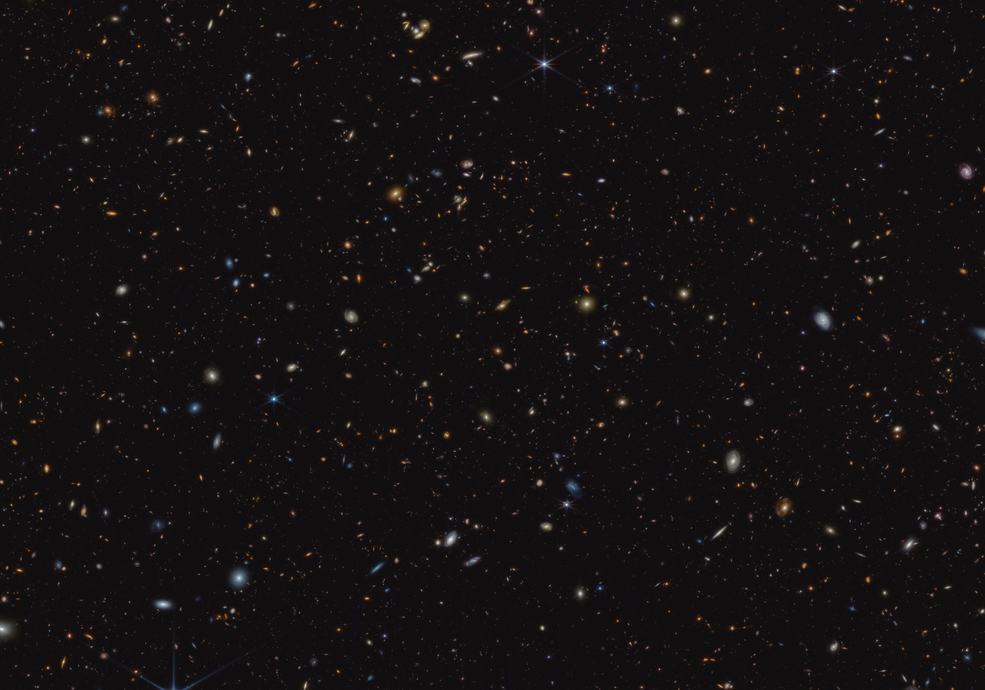
More Posts
- The Cosmos with NGC 6872 & IC 4970
- Paul McCartney Day
- William Hooker Day
- Rudy Rutherford Day
- World Fusion with Manika Kaur
- Daily Roots with the Congos
- Happy Fathers Day 2018
- The Cosmos with RCW 108
- Chuck Rainey Day
- Sing Miller Day
- World Music with Corvus Corax
- Daily Roots with ITSJAHMIEL
- The Cosmos with NGC 3372
- Lucky Thompson Day
- World Music with Sherrifo Konteh
- Daily Roots with Culture
- The Cosmos with NGC 3190
- Jaki Byard Day
- Erroll Garner Day
